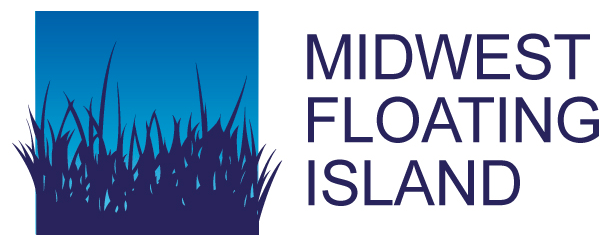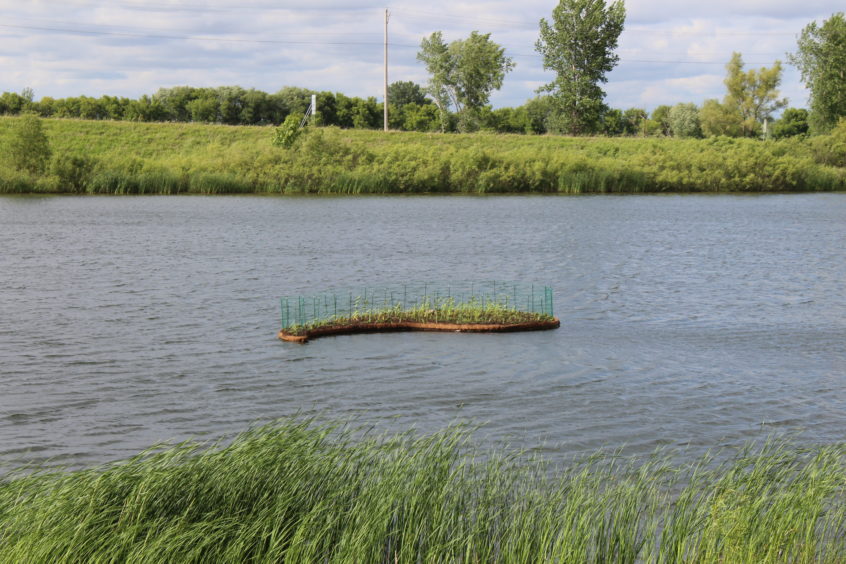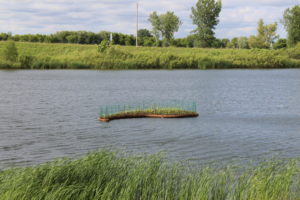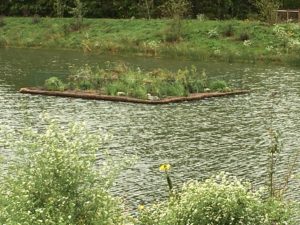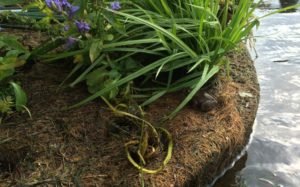Floating Islands, also called floating treatment wetlands (FTW’s), are ideal for improving water quality and habitat in stormwater ponds. Stormwater ponds are artificial ponds designed to manage rain and snowmelt runoff.
Why is storm water a problem
Hard surfaces such as driveways, sidewalks, and roads do not allow water to naturally soak into the ground. The large volume of runoff either goes directly into local streams, lakes, wetlands and rivers or into storm drains that carry the untreated water into our streams and lakes.
The problem is that the run off picks up pollutants from our yards and hard surfaces such as:
- Sediment
- Oil and grease
- Pesticides and nutrients from lawns and gardens
- Viruses, bacteria, and nutrients from pet waste and failing septic systems
- Heavy metals from roof shingles, motor vehicles, and other sources
- Road salts
These pollutants can harm wildlife and fish, kill vegetation, foul drinking water supplies, and make recreational areas unsafe.
How can we improve the water quality from stormwater runoff
- Reduce the pollutants
- Everyone can do their part to minimize pollutant runoff by minimizing fertilizers, pesticides, salt and pet waste
- Homeowners can add rain barrels and native rain gardens to allow water to slowly soak into the ground
- Improve stormwater wet ponds
Stormwater ponds were originally designed to capture, control and filter pollutants before they enter local streams and lakes. However, they are struggling to keep up with the immense amount of pollutants. Floating wetland islands (FWI) provide a valuable tool to reduce nutrients, sediment, odor, and mosquitoes.
Pollution removal
Case studies have shown that floating islands reduce nitrogen, phosphorus, total suspended solids (TSS), heavy metals, grease and oil in stormwater ponds before they enter larger waterbodies. By competing with algae for nutrients, floating wetlands can also reduce the pungent smell coming from the ponds over the summer.
Floating treatment wetlands (FTW’s) are proven to remove over 90% of TSS and over 70% of most other harmful nutrients. Consequently, they improve the overall performance of the ponds and make for healthier waterway systems.
Check out our Metra Park storm water case study for more information.
Pollinators
In addition, stormwater ponds are known to be a nuisance for insects, particularly mosquitoes. BioHaven® Floating Islands are planted with native flowers which attract dragonflies, butterflies, bats, and birds to reduce unwanted insects. Islands can be planted with swamp milkweed, which is an important food source for the declining Monarch butterfly population. The islands also create a great habitat for frogs, who can eat large amounts of mosquitoes.
Changing Water Levels
Finally, storm water ponds are also used to reduce flooding. They serve as a drainage area for the surrounding land. The sides of the pond are sloped to ensure that water can flow through the system by gravity. Floating islands are designed to float up and down with changing water levels so the plants never end up drowning or rooting into the ground.
Maintenance
Floating islands can remain in the stormwater ponds in the winter. The native plants will grow back every spring. It is recommended that someone check the anchoring every year. After several years, you can remove some of the dead leaves to lighten the weight on the islands if the island looks low in the water.
Who to contact
Stormwater ponds are often maintained by your county or city. Talk to the government and watershed officials in your area about adding floating islands to improve a storm water pond near you. However, if the pond is on privately owned land, it is up to the homeowner or business to uphold good maintenance practices before this water enters our full waterway system.
